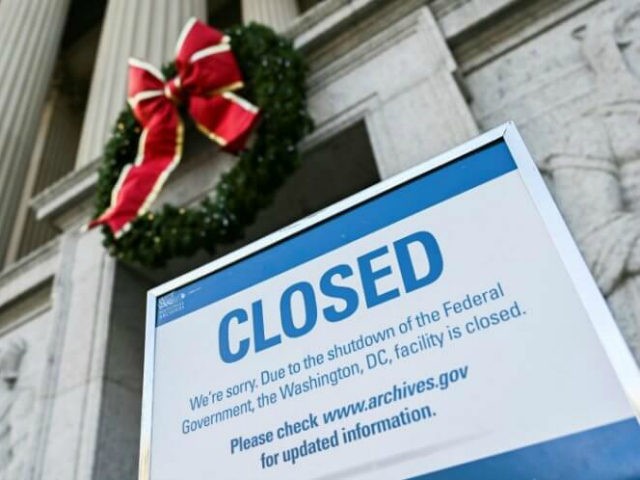President Donald Trump’s fight with Senate Democrats over border wall funding partially shut down the government and left many Americans wondering what happens during a partial government shutdown.
Various things transpire when the government shuts down.
Government agencies that have not received funding include the Department of Homeland Security (DHS), the Department of Justice (DOJ), the Interior Department, the State Department, the Agriculture Department, and the Department of Housing and Urban Development (HUD), among other federal agencies.
During a government shutdown, the Office of Management and Budget (OMB), which Acting White House Chief of Staff Mick Mulvaney runs, issues guidance to each agency to develop its own shutdown plan. In a shutdown, federal agencies must stop all “nonessential” work, and all non-employees must stay home until the shutdown ends.
The shutdown will end when President Trump signs a spending bill passed by Congress. Former President Bill Clinton experienced the longest government shutdown at 21 days.
Essential government services will continue, which include:
- The U.S. Postal Service will remain open and deliver mail.
- The Transporation Security Administration (TSA) will continue to provide security, especially for air travel.
- The government will continue to provide Social Security checks.
- Medicare and Medicaid coverage will continue.
- Special counsel Robert Mueller’s investigation will continue.
- Customs and Border Patrol (CBP) agents at America’s border and American troops at the border will continue securing the border.
- The Smithsonian and the National Zoo will remain open through January, using prior-appropriated funds.
Some minor government services will close during the partial shutdown. The Agriculture Department will close its state and local farm service centers across the country. The Federal Housing Administration (FHA) might slow down loan processing, and approvals and new loan applications may not be considered until after the shutdown.
A shutdown also impacts many of the government’s hundreds of thousands of federal government employees.
More than 420,000 federal employees will have to work without pay. Additionally, the government will furlough, or send home without pay, roughly 380,000 federal employees, as the government considers them “nonessential.” Nonessential employees include:
- Approximately 86 percent of the Department of Commerce staff
- Approximately 96 percent of NASA employees
- Roughly 52,000 Internal Revenue Service (IRS) employees
- Approximately 95 percent of HUD employees
Congress does not have to backpay furloughed employees; however, historically, it has done so.
Establishment media publications such as Politico and NBC News have attempted to portray the devastation that comes with Trump’s partial shutdown.
NBC News reported that in Washington, DC, lights were off at the Korean War Veterans Memorial and that part of the National Christmas Tree was closed following electrical repairs.
Politico wrote that the partial shutdown would slow down research at the National Science Foundation (NSF), National Institute of Standards and Technology (NIST), and the National Oceanic and Atmospheric Administration.
The publication also contended that furloughing nonessential employees would serve as a “blow to morale.”
Previous government shutdowns have been more painful for some, including America’s veterans.
Former President Barack Obama shut down the government in 2013 and set up barriers so that veterans could not visit the World War II Memorial.
In contrast to Obama, the Donald Trump administration announced last week that they will make the government shutdown as “painless as possible.”

COMMENTS
Please let us know if you're having issues with commenting.